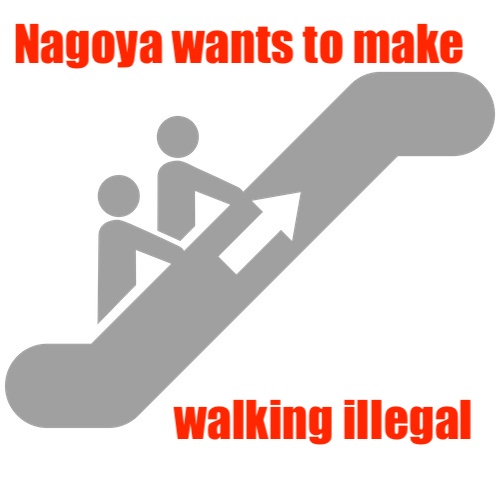Relies on Observational Study of Escalator Walking Behavior Not Causes and Failed Saitama Law
Nagoya City Council announced on Feb. 17 its intention to make walking on the city’s subway escalators illegal from October this year. The city’s purported goal is to make passengers stand still while using escalators and lower the number of ambulance calls.
The Assembly stated that 133 ambulance calls were made to assist passengers who had injuries from riding escalators on the city’s subway escalators in 2021. The Assembly did not state causes for ambulance calls.
If the legislation is approved, not only would Nagoya be the only city that passengers stand left and walk right on escalators, but it would become the only city to make walking on either side illegal.
While other cities in Japan, such as Fukuoka City, have had campaigns encouraging escalator riders to stand and not walk, only one government attempted to make this illegal. In Oct., 2021 the Saitama Prefecture government made walking on train and subway station escalators illegal. However, the law contained no enforcement measures such as fines or penalties, and received much criticism.
Much of the country’s “No Walking on Escalators” campaign is based on research by the self-proclaimed escalator expert Edogawa University Professor Emeritus Masakazu Toki who often appears in television programming. His observational study on walking on escalators behavior and Japanese Identity and another study of around 3,000 passengers and their behavior regarding walking or standing.
According to a study of Chinese metro escalator accidents at the U.S. National Institutes of Health, causes of accidents are varied and can depend on time of day, the direction of the escalator, whether a passenger is holding luggage, riding alone versus with a group, and the behavior of other passengers, among others. One part of the study on the Guangzhou Metro found that close to half of those injured were aged over 65. It also found 86% of accidents were on rising escalators.
London’s Underground conducted a six-month test of positive behavior conditioning in between 2015 and 2016. It sought to find the most effective ways to encourage safe riding on escalators and found that seven out of the twelve methods tested produced effective safety outcomes. The most common approach was constant messaging of how to ride escalators more safely on handrails, step-risers, videos on panels and silhouette projectors. It also found that floor vinyls that lead to elevators and messaging for elderly and luggage holders to use those instead of escalators had achieved safer riding.
Prior to COVID-19 restrictions, Nagoya City’s subway system averaged 1.3 million passengers a day. This figure dropped to just under 1 million passengers during COVID-19 restrictions. With COVID-19 restrictions mostly lifted and tourism and large international events like the 20th Asian Games 2026 now being promoted, subway ridership is set to increase.

